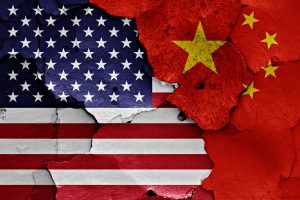The Diplomat author Mercy Kuo regularly engages subject-matter experts, policy practitioners, and strategic thinkers across the globe for their diverse insights into U.S. Asia policy. This conversation with Dr. Timothy Heath – senior international defense researcher at the RAND Corporation and former senior analyst for the USPACOM China Strategic Focus Group ̶ is 304th in “The Trans-Pacific View Insight Series.”
What are the top three findings related to the Indo-Pacific from your recent RAND report “Stabilizing Great Power Rivalries”?
A top finding is that the United States and China are experiencing an intensifying rivalry that will likely last many years. By rivalry, we mean a competitive relationship between two powers characterized by rough parity, mutual perceptions of acute threat, a shared history of intractable disputes and an expectation of potential future conflict. The current U.S.-China rivalry can be dated perhaps to the 1996 Taiwan crisis, but its intensity has waxed on and off over the years. Since the 2010s, the rivalry has become increasingly antagonistic and competitive.
Another of our findings is that rivalries such as that experienced by the U.S. and China can be unstable or relatively stable. Unstable rivalries historically have been more prone to armed conflict, and for obvious reasons it would be best if the U.S. and China could avoid such risks.
A third finding is that the general trajectory of the U.S.-China relationship unfortunately appears headed towards increased instability. Symptoms of this trend can be seen in the investments by both countries in military capabilities aimed partly at one another. Similarly, disputes between China and the United States have expanded across virtually all policy domains, including trade, investment, and technology. Many of these disputes are core to the economic prosperity and political stability of each nation.
Explain the defense policy implications of China-U.S. great power rivalry vis-à-vis regional security architecture in Northeast and Southeast Asia.
The accelerating U.S.-China rivalry carries profound implications for the security architecture in Northeast and Southeast Asia. The rivalry is a main driver of the region’s political polarization. Although countries have in recent years found opportunities to play the great powers off each other to extract maximum benefits, it will probably get harder to do so. Countries are also already learning that more generous benefits can accrue to countries that choose to align more closely with Beijing or Washington. But this same decision could come at the cost of antagonizing the rival country. Australia, for example, gained security and diplomatic benefits when it opted to work closely with the United States to build nuclear submarines. However, this decision also resulted in greater tensions with Beijing and various forms of Chinese economic diplomatic and economic retaliation. In coming years, many decisions, even those that seem technical and apolitical, may take on political overtones as the rivalry intensifies. We are already seeing this trend in the controversy over whether countries adopt Chinese or U.S. forms of 5G technologies in their information networks.
Identify the key variables underpinning China-U.S. great power competition and cooperation.
We identified two groups of factors and a set of perceptions that appeared to most impact prospects for stability or instability in a great power rivalry. One group concerned the “national policies” of each country. These are the policies voluntarily undertaken by each country relevant to the other rival. Examples include policies that affect military capabilities, demonstrate restraint, show acceptance of the other side’s legitimacy, limit competition to peripheral issues, establish communication channels, promote personal relationships among elites, affect allies and partners, and comply with shared established norms and rules. As applied to the U.S.-China relationship, these have generally trended towards greater instability in the rivalry.
Another set of factors concerned the “context” or “structural” variables. These are not necessarily determined by national policies but can affect incentives to exercise restraint or not. Examples include the relative balance of military offensive-defensive capabilities, the objective costs of aggression, the influence of domestic interest groups, the prioritization of status, honor, and prestige, contestation over resources, existence of a common enemy, interdependence, the means to react proportionally. These have more of a mixed influence, with some factors such as the influence of domestic interest groups and lack of a common enemy pointing to greater instability, while interdependence and a mutual recognition about the potentially high costs of aggression adding a restraining influence.
What is the impact of Chinese great power ambitions on U.S. military doctrine?
China’s great power ambitions have included a stated desire to subjugate Taiwan, control the East and South China Seas, and achieve regional primacy. These ambitions clash with a U.S. desire to sustain a status quo that it has long found favorable to its own interests. The intense competition and sense of threat that pervade the U.S.-China rivalry stem in large part from incompatible goals related to the Indo-Pacific region. Although China has so far relied primarily on economic and diplomatic tools to further its goals, the possibility that China might resort to arms to impose its will cannot be fully discounted, Accordingly, the U.S. military will likely continue to have an important responsibility in defending U.S. allies and partners from potential Chinese aggression.
How should U.S. and Western policymakers and military planners understand the threat trajectory of great power rivalry in the Indo-Pacific region?
Due to their position and size in the global economy, U.S.-China competition is unavoidable. However, conflict is far from inevitable. Despite the trends, the two countries can still take action to promote a more stable rivalry. Both sides can take steps to expand channels for communication, increase dialogues and diplomatic flexibility in managing disputes, expand direct people to people exchanges, and discourage unnecessarily inflammatory and incendiary rhetoric against the other side.

































